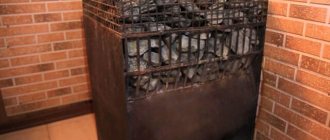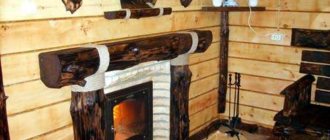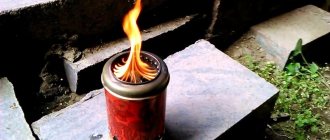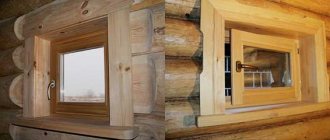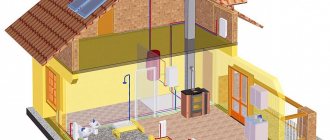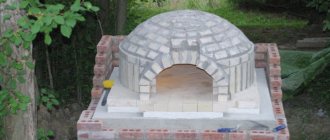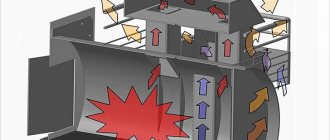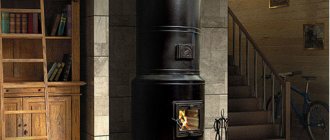Read the article on how to choose the best equipment, buy a ready-made stove or make it yourself.
At the dacha, waste disposal can be a real problem. The way out of this situation is to use a stove. You can buy it or make it yourself. Both options have their pros and cons. To burn garbage safely, you need to choose the right hearth design. We have deeply studied this topic and are ready to share with our readers what stoves exist for country waste, and how to choose them correctly.
What kind of waste can be burned on your property?
All sorts of garbage accumulates in summer cottages. In most cases, you can dispose of it yourself. The waste is burned to free up space on the site. But only the following waste can be disposed of in this way:
- dry grass;
- paper;
- boards;
- tree branches and trunks;
- rags;
- weeds;
- food waste;
- paper and cardboard packaging for food and drinks;
- old tops.
Such garbage can be safely sent to the furnace. But there is a list of waste that cannot be burned in a stove. These include:
- plastic;
- glass;
- electronics;
- metal;
- synthetic fabrics;
- aerosol cans;
- painted boards (except water-based coatings);
- posters, paper with thick ink filling;
- chipboard;
- other materials, items containing chemical components.
Such waste releases toxins when burned or is not disposed of in this manner. They are sent to special processing centers.
Therefore, before sending the waste to the furnace, it is sorted. If there is waste prohibited for such disposal, it is taken to a place designated for recycling.
What should not be burned
Recyclers are designed for organic waste. Do not place plastic, glass, metals, electronics or synthetic fabrics in the oven. It is prohibited to dispose of used aerosol cans by fire - they belong to metal waste and pose an additional hazard, creating a risk of explosion. The following cannot be burned:
- painted boards; a possible exception is products with a water-based coating;
- posters and other papers with a lot of ink (advertising brochures, flyers and similar materials);
- particle boards whose components or coating are capable of releasing toxic substances when burned.
By-products of gardening activities (branches, dry grass, weeds, wooden remains of equipment), worn-out rags and organic compounds that are not suitable for composting are suitable for disposal in incinerators.
The presence of unwanted scraps from the above list occurs in small concentrations - it is rare that a homeowner will look for a painted board or an old poster in a pile intended for burning.
These requirements apply to homes. Industrial equipment, such as Japanese smokeless stoves, one of which went into operation in the summer of 2018 in the medical sector of Yakutsk, is designed for many types of combustible waste. Similar installations are used in Australia, the European Union and other regions, allowing to reduce the concentration of solid waste in landfills. But for individuals it is better to limit themselves to pure or minimally processed organic matter.
Homemade or ready-made firebox?
There are arguments both for and against both options. Homemade structures are much cheaper than ready-made ones. They have a simple design, which simplifies maintenance. But there are also disadvantages. For example, it is impossible to create a complex, high-quality device at home. Primitive equipment can only burn garbage. It cannot perform other functions.
To make a structure for recycling country waste, you need to know how to use a welding machine. The master must have the appropriate tool, as well as the necessary materials. Thin-walled metal is not suitable for these purposes, and it is difficult to make a high-quality weld in thick metal using a household welding inverter.
Purchased products cost more, but their design is more functional. The heat generated by the equipment can be used to heat your home or cook food. It is durable and has good build quality. You do not need to have a welding machine on hand and know how to weld sheets of metal. Therefore, for many summer residents it is much easier to buy a fireplace.
The appearance of purchased models is better. Many of them have smoke filtration systems that reduce the amount of harmful emissions into the atmosphere.
Amateur modifications
The disadvantages of all household waste incinerators described above are common:
- You cannot destroy plastics and, especially, empty containers of toxic chemicals: at a distance of up to several tens of meters from the oven, the concentration in the air is respectively. harmful substances can exceed their ULV in the atmospheric air several times and many times over.
- Unsuitable for burning solid waste: they smoke very strongly, and the concentration of hazardous combustion products can also significantly exceed the permissible values at a sufficiently large distance from the installation.
- When loading raw standard material and reloading fresh material, they smoke profusely for quite a long time.
- Ash is unsuitable for fertilizer: due to incomplete chemical destruction of the material, it contains many impurities harmful to plants and people.
We burn dangerous packaging
The first drawback is perhaps the most serious for owners of productive private household plots, because... Special collection points for pesticide packages are not available everywhere. However, it is fundamentally possible to burn hazardous containers on the site at temperatures not lower than 900-1000 degrees and complete combustion of flue gases: none of the known active ingredients of pesticides can withstand such conditions without complete destruction. Their “foreign” components (chlorine, sulfur, phosphorus, metals) will then escape into the atmosphere in the form of pure substances or their stable compounds. Their absolute (by weight) content in pesticides is negligible. In any case, the owner’s car will “puff” more of the same elements into the air during the trip to the collection point and back.
Drawings of a country-garage stove suitable for burning pesticide packages (not while heating rooms and/or cooking!) are given in the figure:
Drawings of a universal country stove suitable for burning pesticide packages (not during cooking and not indoors!)
This design was chosen as the prototype according to the following. reasons:
- The stove is insulated with heat-intensive material – sand. Consequently, the air entering it immediately heats up well (see also below).
- The furnace firebox is voluminous; it will fit a 2-liter plastic canister, and pesticides in 5-10-liter containers for the needs of private household plots are purchased extremely rarely.
- There is no blower as such, which significantly reduces heat loss by radiation from the firebox and increases the temperature in it.
- The air intake window is quite wide and is located so that air enters the fuel from the bottom up through the grate. This significantly reduces the operating time of the stove on one load and somewhat reduces its efficiency, but with dry, high-quality wood fuel, such a stove can be “overclocked” to 1100-1200 degrees under the arch of the firebox.
- The thermal circuit with the circulation of flue gases ensures their almost complete combustion already in the body of the furnace. To do this, instead of the standard blind burner cover, you need to put on a throttle cover with a hole D(4-6) mm for air access.
- This stove does not require an expensive sandwich chimney: a simple tin pipe with a height of 1.5 m with an umbrella deflector (or fungus) is sufficient.
- An unusable household gas cylinder will fit perfectly onto the stove body.
The procedure for burning plastic containers containing toxic chemicals in this oven is as follows:
- The stove is taken outside at a distance of at least 15 m from residential buildings and the boundaries of the site. It is unacceptable to cook food on it during waste disposal!
- The firebox is loaded to 3/4 of the height with good dry wood fuel: chopped (required!) logs or wood chips. The thickness of the logs/chips is 3-6 cm;
- Replace the burner lid with an air throttle;
- The fuel is set on fire from under the grate with a newspaper or a torch;
- When the fuel has settled down to approx. at 2/3 of the height, but it will still be burning with all its might, materials to be destroyed are loaded into the furnace, not reaching the roof of the firebox by 5-6 cm;
- When the starting load burns down to the coals, check whether the remains of the destroyed container are visible;
- If yes, I add more wood fuel and let it burn out completely.
Ash from burning plastic containers in such a furnace is still not suitable for fertilizer: it may contain many compounds of aluminum and other metals. But you can throw it in a regular trash container.
Self-improvement
The above disadvantages of household waste incinerators are due to the low combustion temperature, which, in turn, is caused by insufficient air access to the fuel mass. The absence of an afterburner as a separate device also plays a big role.
Amateur craftsmen have long found ways to partially solve this problem with their own hands. The first is to place a holey barrel without a lid on fireproof supports (for example, bricks, on the left in the figure).
Various ways to increase the efficiency of homemade waste incinerators
Good wood fuel is loaded first, 10-15 cm in height. Then plastic, etc., is piled up to another 30 cm, and the oven is loaded to the top with branches, dry tops and leaves. The fuel is ignited from below. If the stove is not loaded while moving, then at first there will be a slight smoke, and then the stove will not smoke. But the gas analyzer shows the presence of CO (carbon monoxide, carbon monoxide) and foreign impurities in the flue gases 1 m above the mouth of the furnace and in the immediate vicinity of it.
The second method is to use a barrel lid cut from a barrel: cut a hole of half the diameter in it, and place a gas deflector 10-15 cm above it (in the center in the figure). The deflector forms an afterburner similar to that in a garage furnace during mining. Hazardous impurities “go away” from the analysis, but the stove smokes a little (the afterburner is primitive), and reloading it on the go is generally impossible: if you remove the lid and put it back, the combustion immediately goes down to superficial, the stove smokes heavily and fumes, even hurting your eyes .
It is possible to get rid of smoke while a finished factory oven is running by making its walls perforated (on the right in the figure). Such an incinerator will be self-adjusting: more air will pass to where the pressure in the furnace is lower, and this is precisely the zone where the exhaust gases burn out. The disadvantage is the same as before. case: the lid must not be removed for a minute until the load of material has completely burned out.
The simplest option
Drawing of a simple household stove made from a barrel for burning garden waste
The most widespread scheme, both among amateur and industrial household waste incinerators, is the “leaky barrel on stands”. Poisonous containers do not have to be burned often, and inspectors with gas analyzers do not roam around in flocks. You can easily get rid of carbon impurities by making a blower window at the bottom of the furnace shell and attaching a door to it to regulate air access, thereby achieving the least amount of smoke in the furnace. A drawing of this type of incinerator is shown in Fig. on right.
Additionally, see also the video about a homemade incinerator on bricks (literally):
Video: a simple outdoor garbage stove made from a barrel
and about techniques for working with power tools when making a garbage stove from a fuel barrel:
Video: “processing” and equipping a barrel in an oven for burning leaves and branches
Note : if you need to burn large enough wood debris once, for example, twigs and branches after pruning trees, a smokeless disposer for this can be quickly built on the principle of a wood chip stove, see video:
Video: smokeless waste incinerator
Purchased models
The finished stove consists of a metal casing that prevents sparks from falling out during the combustion process. It is made of sheet metal with a minimum thickness of 3 mm. The body is covered with heat-resistant enamel, which prevents the development of corrosion. The dimensions of the finished models are relatively small. When cold, it can be easily transported from place to place or loaded into the trunk of a car.
There are grates inside the firebox. They look like gratings, most often made of cast iron. The combustion process occurs on the grates. Large debris remains here until it becomes ash. Grate bars are also needed for the flow of oxygen, which supports the combustion process.
There is a blower door at the bottom. When it is slightly open, air enters the firebox, enhancing the combustion process. Subsequently, you can rake out the ashes from here and use them as fertilizer.
The top cover will protect the fire from rain and bad weather. It limits the flame, preventing sparks from flying up or flying away. The design may have vertical loading of waste. In this case, the firebox door will not be on the body, but on the lid.
What's in stock
The main problem of waste disposal from private household plots is the presence of municipal solid waste (MSW); They are the ones who turn the material for disposal into a rather dangerous substance of unpredictable composition and properties. Therefore, the main product in this segment of the consumer goods market is a garden waste incinerator. Load composition – branches, twigs, tops, fallen leaves, etc. Although it's bad, it's fuel. Manufacturers specifically warn in their instructions: you cannot burn solid waste in their stoves.
Unfortunately, high technology is not encouraging in this regard. The maximum that a household oven for garbage represents in an age exploring the origins of the Universe, the foundations of reason, the quantum world and planning interstellar flights is a hybrid of the good old leaky iron barrel and a country-garage potbelly stove. The technical difference from the latter is essentially one thing - an excessively inflated firebox: the efficiency of the device does not matter, but more material needs to be crammed into it.
The entire variety of industrial-made household waste ovens essentially comes down to 3 designs:
- The same good old barrel, equipped with a top lid, a fuel door, a grate, a blower and an outlet to the chimney (pos. A in the figure below);
- The same device, square or rectangular in plan (pos. B). Thus, the stove is “masked” as a household trash container;
- An installation that is actually similar to a leaky barrel without a chimney, but equipped with a lid, handle and wheels for transportation around the site and a stop for installation at the place of use (item B).
Types of garden stoves for burning industrial waste
The last improvement is important, because... Rolling the incinerator from heap to heap is much simpler and easier than dragging heaps of leaves and armfuls of tops to it. The prices for factory-made devices for this purpose are very worthy of the 21st century (see below). However, both “cool” and “budget” household waste incinerators, factory-made, and on ordinary garden waste, perhaps smoke more than a properly equipped leaky barrel for the same purpose, see below. In any case, it is enough (see next figure) to attract the attention of representatives of law enforcement and/or supervisory authorities.
Garden stoves for burning industrial waste on the go
Nevertheless, a product of this kind is in sufficient demand under the “ecological sauce” - the cost of its production is negligible, and the “gain” is calculated in many tens and hundreds of percent (!). Currently (end of 2021) in the Russian Federation you can buy household waste incinerators of the following models (in ascending order of price):
- “A dacha according to the mind” - it would be better to call it “without further ado.” Converted 200 liter fuel drum. OK. 3000 rub. Chimney – optional, still approx. 1000 rub. The chimney is good, sandwich type with a Grigorovich deflector. With a chimney there is almost no smoke, even if the material being burned is damp;
- “Barrel” is round, quite thick-walled (approx. 4 mm). With a perforated bottom, without a chimney, fire door and vent. On raw material and when loading new material it smokes a lot. OK. 4000 rub.
- “Barrel” is the same thing, with a blower. OK. 5700 rub.
- MD-25 is a popular model on wheels for burning leaves. Quite capacious. It's quite difficult to roll on the ground. OK. 6500 rub.
- MCJ - the same, but smaller capacity and lighter. It's not difficult to ride. Prices of analogues from various manufacturers range from 7,500 to 19,000 rubles. They explain it by the different capacity and quality of the metal. Stainless steel MSJ priced at RUB 10,000. (in current terms) serve for more than 15 years;
- "Terminator", "Incinerator", "Recycler" – square “container type” with a combustion door, a vent and a chimney. Combustion is regulated by setting the air flow. There is almost no smoke when the material is raw and when it is reloaded, if you know how to adjust the air (instructions are included). Available in sizes S, M, L and XL with capacities from 50 to 375 liters. Prices from 8,000 to 75,000 rubles. About the Terminator XL oven, see video review:
Video: review of the Terminator XL oven
- POD-02 is a square top-loading container (without a fuel door). There is a blower and a chimney. Adjustment of air supply - blower door. Country waste incinerator of small capacity. OK. 9000 rub.
- “Keg” Optima – “Keg” from item 2 with a blower. OK. 9000 rub.
- SM-50 – country house (top loading 50 l) on wheels, with a blower and a removable chimney. OK. 9500 rub.
- SM-160 Super – round, 160 l, top loading. Not mobile (you can put it on wheels, but two people will have to ride it). OK. 10,000 rub.
- “Mistress” – square “under the container”. Adjustment of air flow by blower door, top loading, top exit to the chimney. Smokes when loading raw material. OK. 11,000 rub.
- MSM (small garden waste incinerator) – not so small, approx. 100 l. On wheels, quite light, not hard to ride. The body is made of good steel and lasts a long time (at a weekend dacha - almost forever). OK. 12,000 rub.
- The “Dark-skinned ” series is a round analogue of the “Terminators” (see paragraph 6). Capacity 180, 210 and 250 l. Prices 12,000 – 15,000 rub.
- “Nada” is another analogue of “Terminators”. Capacity 325 l. OK. 14,000 rub.
- "Darkie-ECO" . The meaning of “IVF” is not explained. OK. 14,000 rub.
- SM-60 is an analogue of SM-160 with a chimney and top loading. OK. 14,500 rub.
- USM-1 – round utility container for 200 l. Top loading, side exit to the chimney, air regulation by blower. It can be placed on wheels, but it is heavy for operative mobility. OK. 16,000 rubles, see also video:
Video: USM-1 garden waste disposal oven
- “To the Court” is again an analogue of “Terminator” of medium capacity. OK. 16,000 rub.
Note : there is nothing fundamentally new in the design and nature of operation of all these waste incinerators. Therefore, their analogues are also made by amateurs, incl. for sale on order, see story:
Video: homemade incinerator for 2 cubic meters
Additional items
Today, many ready-made designs are produced that have special additional components. They improve the performance of the equipment by adding a number of functions. For example, complex structures may have a chimney. It increases traction, so waste is burned faster and better. The design with a chimney is productive, so it is purchased if you need to burn large volumes of garbage. Even in wet weather, the recycling process will be fast.
Another possible additional element may be the presence of a water heater in the design. The liquid is supplied through tubes that pass inside the firebox using a pump. Such a boiler is connected to radiators, using it in the cold season. These are volumetric furnaces designed to burn not only garbage, but also wood and coal.
Equipment with a boiler is used for a small country house. The inconvenience of such a system is the need to constantly throw garbage or firewood into the firebox. They burn out in 3-4 hours, and then you need to load solid fuel again. Fill the heating system with special antifreeze so that if the boiler stops, the coolant does not freeze and damage the pipes.
Some designs include smoke purification filters. The oven will be safe for the environment.
Some owners purchase designs with a burner on top. During the combustion of household waste, it will be possible to cook food and heat water. If you have a summer kitchen at your dacha, a model with a burner (or even 2 burners) would be the preferred option.
Furnace for burning waste in the countryside from manufacturers
Many types of stoves for burning waste in the country are manufactured in production. Particularly inquisitive and skillful dacha owners prefer to make them themselves. This allows you to save a decent amount of money.
The cost of a purchased stove is about 250,000 rubles. And we can assume that it is still inexpensive! The main reason for such a provocative price will be complex, expensive and energy-dependent electromechanics. Its resource is limited - approximately once every five years it will be necessary to carry out major repairs at the cost of a third of the purchase of the latest device.
To power the burner you also need fuel gas, the cost of which is included in the monthly fee at the factory. There are no discounts or subsidies provided by the state, because self-disposal of waste is not legal. Ash from boilers is unsuitable for fertilizing the soil, because it contains many harmful substances, so it will also have to be disposed of.
And although in our country with the elimination of waste in summer cottages not everything is as transparent as we would like, assembling or purchasing a waste incinerator will be a necessity. Their presence on your homestead will provide a more comfortable stay, and the environment will thank you.
Homemade design
To make a stove yourself, you need to prepare the necessary materials and tools. The easiest way is to use a metal barrel for this. A container whose surface is not covered with rust will do. Its capacity is 200 l.
You can also use a piece of pipe with a diameter of 500 mm. Such a metal case has thick walls of 8 mm, so cutting holes and making welds in this case is difficult. A stove made from such a pipe weighs a lot and is difficult to operate. The advantage of a thick-walled structure is its durability. The metal will not burn out even with intensive burning of waste.
You can use a rectangular container as a blank. Loading can be done from the side or top.
Barrel stove: option No. 1
A barrel is suitable, which may even have leaks. The door is cut out at the end. To do this, you need to cut it in a circle. Next, the hinges and handle are screwed to the segment. At the opposite end you need to make holes through which air will flow into the firebox.
The stove must be installed on supports. To do this, use metal corners, which are attached in the form of a parallelepiped or crosswise.
A grate needs to be inserted inside the structure. You need to leave a little space under it. This will be the ash pit. In the upper part of the barrel you need to make a hole of the same diameter as the chimney. You need to divide the circle into 10 equal sectors and make cuts along the lines. Then the resulting triangles are folded upward. A chimney is welded to them.
Do-it-yourself garbage incinerator - “modernized barrel”
A barrel for burning garbage with your own hands is, at first glance, not the most presentable structure. But it can be made elegant and, most importantly, useful. You can end up with something like this beautiful design if you follow all the instructions!
When making this design yourself, you don’t need to have a professional education - anyone who wants to can handle it.
Preparatory activities
If we talk about materials, it seems that there are a lot of them. But it is not so.
What (besides the barrel, of course) will we need:
- A metal profile measuring 5 meters (we will cut it into 5 identical parts).
- Steel rod 5 meters long.
- 2 loops.
- Square meter of welded mesh.
- Spark arrester (fastener diameter should be 11.5 centimeters).
- 0.2 kg wire.
- A tin pipe is one and a half meters long and 11.5 cm in diameter.
- Degreaser.
- A handle with a wooden attachment on it.
- 6 pieces of bolts and 6 pieces of nuts.
- Electric jigsaw and metal files.
- 20 self-tapping screws with a wide head.
- Drill for metal with a diameter of 1.2 cm.
- Grinder and circles for it (for sandpaper and for metal).
- Fire resistant paint.
- Brushes or spray.
- Electric drill.
After preparing everything you need, it’s time to start building a homemade garden stove for burning garbage.
Step-by-step oven assembly
Work process:
- Cut out the door. For this purpose, let’s draw a line on the bottom to which it will be attached. We carefully cut the line with a grinder so as not to touch the side walls.
- We make several holes in the door through which air will enter. They need to be done at the bottom, the order is not important.
- If there is a need, then to clean the barrel from paint or rust, we use a grinder with an installed emery disc.
- We begin the construction of the trestles. To do this, we use 5 sections of metal profile. The goats consist of 2 crosses, which are connected by a rod. The profile is connected only at right angles, so we make 2 holes in each and tighten them with bolts.
- We begin degreasing and painting the barrel, while not forgetting about the goats. These procedures are best carried out in an unassembled state. We cover each element with several layers of paint, after the layer we wait for the coating to completely dry.
- We will start constructing the goats after 24 hours from painting. You need to place washers under the nuts and securely tighten each element of the barrel.
- Let's start installing the hinges and handles. To do this, we use a screwdriver and prepared screws.
- We make a hole for the chimney. At the top of the structure, draw a circle with a radius of 5.75 cm.
- Then we use a grinder to go around this circle and get “petals”. Ultimately there should be about 10 parts. We bend each petal upward - this way they will be installed vertically.
- We are installing a chimney for a stove that burns garbage in the country. We place it on the petals so that they are on the inside. Then in 3-4 places we begin to screw the pipe to the petals using self-tapping screws so that it does not tear it off later.
- We begin the installation of the grate.
- We put the lid on. We attach it using clamps.
It is better to do the installation of hinges with a partner, because the door will definitely begin to fall through.
Barrel stove: option No. 2
There are other ways to use a barrel as a stove. You cannot burn garbage in it by simply dumping it in a container. There will be no air flow to the lower layers. Because of this, it is impossible to dispose of large volumes of waste.
To solve this problem, holes are made in the bottom of the barrel. They need to be done both at the bottom and along the perimeter of the walls. The barrel cannot be left on the ground. Therefore, a homemade stove must be placed on bricks. They are folded in the form of a firebox, which will allow you to light a fire under the barrel, and not in it. This will allow you to quickly dispose of all the garbage that has accumulated on the site.
Typical waste incinerators
They are made of 2mm thick steel, coated with fire-resistant enamel. Small dimensions, which makes it easy to transport the stove in a passenger car. The combustion process takes place on the grate, which traps large debris and household waste, and also does not interfere with the flow of air from the bottom of the stove.
The ash itself falls through the bars of the grate. Combustion is adjusted by opening/closing the ash door, through which oxygen enters. From there, ash is raked out, which gardeners love to use as fertilizer for their plots. There is a lid on top that not only protects the flame from rain, but also serves as a flame limiter.
Brick oven
A stove built of brick looks great. It can be built from scratch or an old sauna hearth can be used for these purposes. Brick can also be used to line a metal barrel to increase safety when using it.
Brickwork is built using fireproof mortar. If the structure is small, you can lay the blocks without cement. But such a design must be used carefully. The following types of bricks are suitable for masonry:
- Fireclay. The brick can withstand heating up to 1500°C.
- Red. Withstands heat up to 1000°C. Only solid bricks are used for the stove.
- Graphite. It is used as a finishing for the internal surface of the firebox, as it can withstand heating up to 1700°C.
The cost of refractory blocks is high, so they are used mainly for the construction of fireboxes. Red brick costs less. A stove built of brick is safer than metal structures. Without welding, you can build a beautiful hearth that will have 2 chambers inside. There are many design options for a garden brick stove.
Construction of a brick furnace for burning waste
A brick structure is the easiest to manufacture and most convenient option, since removing garbage from a summer cottage is not profitable from a financial point of view, and lighting fires can cause a fire.
A stationary furnace designed for burning small organic and construction waste has a number of advantages:
- low cost;
- harmonious addition to the dacha landscape;
- safety and environmental friendliness;
- long period of use.
The recycler can be purchased at a specialty store, but you can save a lot by building it yourself. For a stove that will occupy an area of 1 m by 1.5 m, you will need 115 bricks and a metal grate. Practice shows that a small structure is sufficient to dispose of a standard volume of waste from one summer cottage. The dimensions can be increased if necessary by independently calculating the amount of building materials.
Step-by-step instructions for construction
Having prepared the necessary materials, you need to follow a simple work scheme:
- An area of 0.7 m by 1 m is cleared of leaves, branches and covered with sand. The optimal layer height is 5 cm.
- Without using mortar, a layer of bricks is laid dry around the perimeter of the stove under construction. There should be at least 1.5 cm between the materials to create natural traction. The required number of bricks is 8 pcs. In this case, one is placed on the left and right sides, and 3 pieces are placed at the top and bottom.
- A metal grate is placed inside. As an alternative, you can use reinforcement rods with a diameter of about 1 cm, which you make yourself from wire. A lattice with 3 transverse rods of 0.55 cm each and 14 longitudinal rods of 0.68 cm each is suitable.
- The ash pit, which is used to collect ash, can be built from bricks, poured from concrete or made from steel sheets. From the point of view of physical characteristics, all options are equal. However, the most cost-effective design is made from cement-sand mortar.
- The next level also uses 8 bricks. 2 pieces are placed on the right and left. There are gaps between the building materials into which longitudinal rods are inserted. The subsequent rows are performed similarly. The total height is 12 levels. There is no need to use the solution. The top row is made without gaps.
- An iron cover is installed on top, which will protect from rain.
Using a similar scheme, you can make a recycler in the form of a cylindrical tower. However, it is important to remember to leave gaps. A grate should be used.
What to look for when choosing?
Important characteristics of a waste disposal site are:
- Weight. Weight should be average. Stoves that are too light quickly burn out, since the thickness of the metal walls is small. A heavy, thick-walled structure is difficult to move from place to place.
- Dimensions. The size of the firebox is selected depending on the type and amount of waste. If you plan to burn large logs, boards, or other large objects, the size of the internal chamber should be large. Otherwise, the disposal process will take many hours. You will have to burn the garbage in small batches. If there is relatively little debris, make a small firebox.
- Service. The interior of the oven will have to be cleaned periodically. The design must be thought out so that the maintenance process is not complicated. Access to the space under the grate must be free so that the ash can be easily removed.
- Appearance. The container must be neat and fit harmoniously into the landscape design. If the stove looks unsightly, designate a space for it in your backyard.
